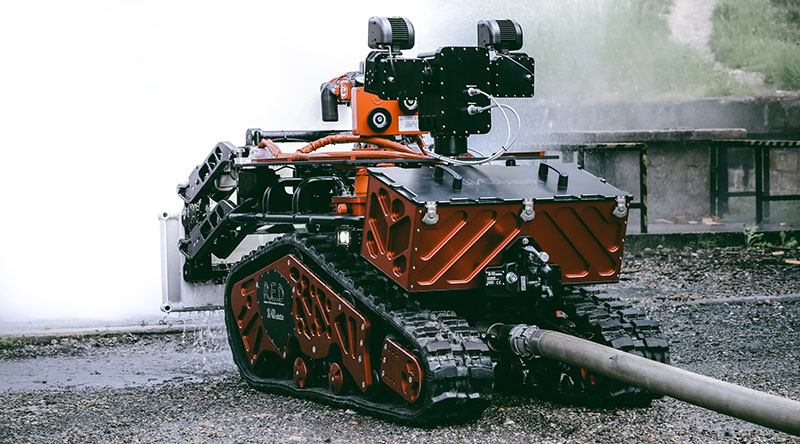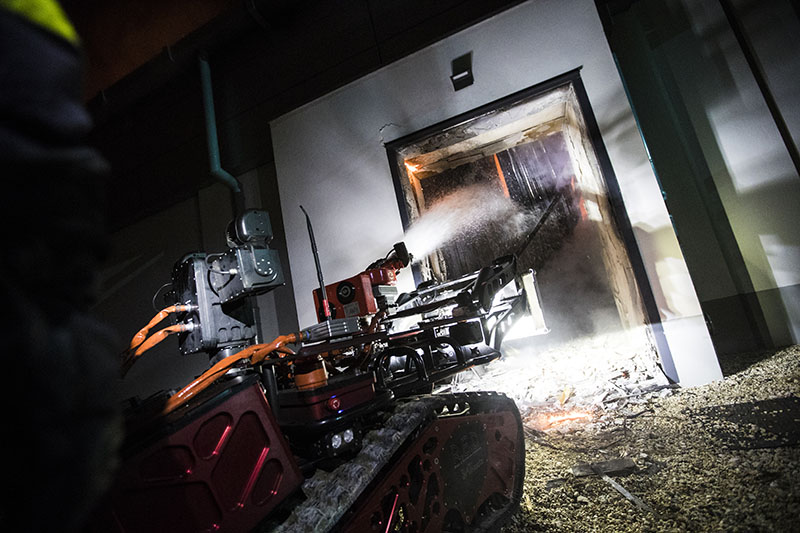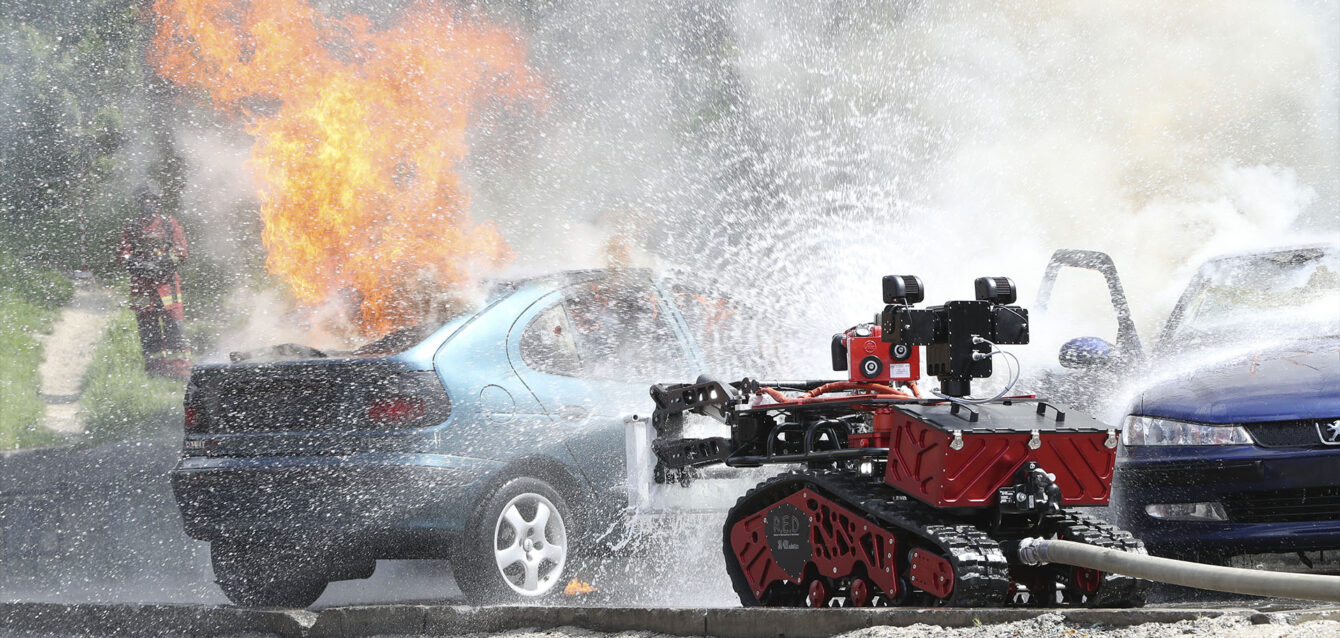Colossus robots are developed by Shark Robotics, a company founded in 2016 that is currently considered a global market leader in the design and manufacture of high-quality unmanned ground vehicles that combine performance, reliability and robustness. With its robotics and mechanical capabilities, the robots are manufactured and designed for specific customer needs and the specific tasks they are to perform. In our country, it proves effective as a firefighting robot.

Robot Colossus – the only “fire-whipped” firefighting robot
Designed and developed in collaboration with the Military Fire Brigade of Paris (BSPP), the Colossus robot has been used in 270 interventions over a period of 5 years in a variety of difficult conditions and dangerous environments. In La Rochelle, France, the entire process of research, development, design, assembly as well as 100% of production took place.
The COLOSSUS robot is the world’s most powerful multi-purpose support robot, resistant to high temperatures and with excellent field performance, designed for intervention in hazardous areas with versatile applications for firefighters, military and industrial safety. It stands out for its resistance to temperatures up to 600 °C, its strong and durable construction in aircraft aluminium.
Capable of moving forward and backward on various types of surfaces at a speed of 7.5 km/h, COLOSSUS is able to climb stairs up to 40° inclination, pass through doorways 78 cm wide or more, turn on the spot and overcome obstacles up to 30 cm high.

One of the many advantages of the COLOSSUS robot is its enormous power, which is up to 16,000 watts of cumulative power. It is capable of pulling and pushing 1000 kg, its carrying capacity is 500 kg and its battery life is up to 12 hours of deployment (6 batteries 29,8 – 46 Ah).
Depending on the purpose of the deployment, the robot can be quickly adapted to a specific task by changing its equipment in less than 30 seconds by one person without the need for special tools:
- installation of the water trap: 10 seconds,
- material carrier, assembly/disassembly: 20 seconds,
- stretcher carrier for transporting persons: 20 seconds,
- operable bumper for entering spaces or clearing obstacles: 20 seconds.
Interesting are also its other technical parameters and features such as dimensions 160x78x76 cm, weight (without equipment) 500 kg, electromagnetic brakes and tactical rails for equipment, control range up to 600 meters and IP67 resistance.
With the IK Shark remote control, the robot can be controlled remotely using a dual frequency transmitter (433 and 870 MHz) for a visible range of up to 300 meters. The remote control allows control of the water trap, siren, LED lighting and winch. The NX-Shark remote control, which has a range of up to 500 meters, provides the IK Shark remote control features in addition to output from the robot’s video cameras on an 11.6-inch screen, telemetry data, information on the robot’s position, deployment time and speed.
Robots and the integrated rescue system
The possibilities of using robots in Slovakia within the Fire and Rescue Corps as well as other components of the integrated rescue system and the Armed Forces of the Slovak Republic are really wide, for example, as an aid for individual intervening forces and their protection, assistance in difficult and inaccessible terrains, complex conditions of intervention or the use of the possibility of transmitting information from dangerous and difficult to reach places of an emergency incident. Significant assistance can be provided in times of intervention and need:
- fire monitoring using FullHD cameras and thermal imaging cameras,
- fire extinguishing with a water cannon with a flow rate of 3000l/m,
- monitoring the area with CBRN (chemical, biological, radiation, nuclear) sensors,
- ventilating and cooling the area with a large capacity fan,
- the robot may have a structure for attaching a stretcher for transporting a wounded person,
- creating an escape route for possible passage or intervention of the integrated rescue system by means of a controllable front bumper,
- the need for a spare air reservoir source,
- the transport of equipment for firefighters
- activities using an automatic winch up to 1000 kg
Since the beginning of the use of robots in France by the military Paris Fire Brigade, the Marseille Naval Fire Battalion and other French fire brigades, it has been put to real use in interventions such as:
- A 500m2 electrical equipment warehouse fire involving 150 firefighters, with the fire also threatening neighbouring warehouses. The robot made use of a water cannon module that enabled remote extinguishing and facilitated the location of the burning areas by means of a thermal imaging camera,
- the Notre-Dame de Paris Cathedral fire, which took 10 hours at 800 °C, threatened to collapse the roof and melt the metal structures, the Colossus water cannon robot cooled the interior and prevented the structures from collapsing,
- fire in 3 warehouses with a total area of 6,550m2, with the risk of ignition of stored material (textiles), 211 firefighters participated in the firefighting during 9 hours of intervention, a water cannon robot carried out extinguishing, a thermal imaging camera was used to carry out a survey and transmit information on hidden fire outbreaks,
- a fire of 16 trucks with the risk of spreading to hazardous substances that were transported in other trucks, the robot with a water cannon extinguished and cooled the burning trucks,
- an underground garage fire where flames engulfed 2,000m2, the robot provided road lighting for firefighters despite opaque smoke atme and transported equipment for the firefighters’ reconnaissance and assault team





